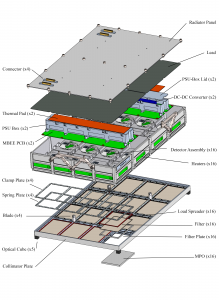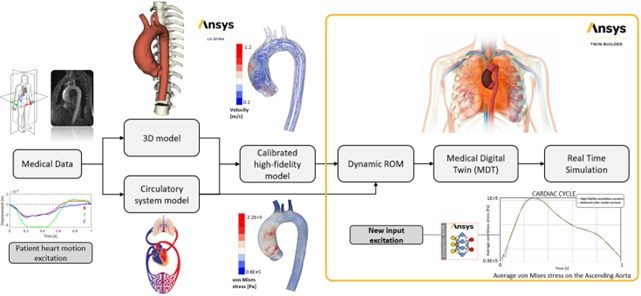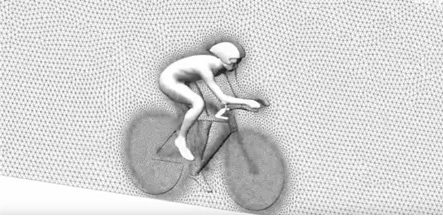 The 2022 edition of AIAS Conference will be held at University of Padua starting on 07th September.
The 2022 edition of AIAS Conference will be held at University of Padua starting on 07th September.
This year RBF Morph will be present with 3 interesting works about the different applications of RBF Morph technology.
Mechanical Design Session
Wednesday, September 7, 2022
 The preliminary thermo-mechanical design, simulation and optimization, of LAD onboard the eXTP mission.
The preliminary thermo-mechanical design, simulation and optimization, of LAD onboard the eXTP mission.
Authors: G. Lombardi, A. Baldelli, R. Fiacco, E. Lombardi, M. E. Biancolini, R. Piazzolla (id. 1943)
In our joint work with INAF we describe the preliminary study that led the design solutions adopted for the most important thermo-mechanical drivers of the LAD Module, which have been elaborated and used for the demonstration of compliance to the system requirements at spacecraft level.
We report in particular the mechanical design for the Module and its components, the thermal analysis for each range temperature of the worst cases (hottest and coldest case) with the evaluation of the thermo-elastic deformation of a reduced module and the results of a campaign of static and dynamic finite element analysis of a simplified parametric model with an accurate mesh processing and the preliminary optimization of the critical components.
Biomechanics Session
Friday, September 9, 2022:
A medical digital twin derived from a patient-specific thoracic aorta model to investigate the effects of the heart motion on the vessel wall.
Authors: L. Geronzi, A. Martinez, M. Sensale, M. Rochette, A. Bel-Brunon, P. P. Valentini, M. E. Biancolini (id. 1910)
The adoption of reduced order models (ROMs) offers the possibility to limit the computational time and enable robust Medical Digital Twins (MDTs). In our joint work with University of Rome “Tor Vergata” we developed a high-fidelity thoracic aorta model and we performed a calibration of its boundary conditions using the data provided by the medical images.
We built then a dynamic ROM in Ansys Twin Builder in which we modified the input cardiac motion at the level of the aortic annulus simulating conditions of left ventricular hypertrophy (LVH), tachyarrhythmia and bradyarrhythmia. These results can allow the clinician to evaluate in real time the wall properties such as stress and strain for the risk assessment related to diseases such as Ascending Aortic Aneurysm (AsAA) as the intensity of the heartbeat changes.

Pedaling cyclist modeling: a combined fem and mesh morphing approach.
Authors: A. Martinez, F. Malizia, B. J. E. Blocken, M. E. Biancolini (id. 1914)
In the extremely competitive environment of professional sports, a growing interest is emerging to understand how to optimize athletes performance from the aerodynamic point of view. In our joint work with University of Rome “Tor Vergata” we propose for this purpose a workflow that enables to accurately reflect anatomical movement and deformations on a computational mesh for the case of a pedaling cyclist in which the leg motion is considered for a transient CFD simulation. This enables to fully understand and analyze the aerodynamic performance of the athlete. This workflow is an effective and controllable approach to transfer complex deformations onto CFD meshes using mesh-morphing exclusively.

Click here to see the Programme.
Reach us with a message for more information about our works.
